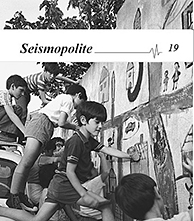Art Residencies – In pursuit of origin (part 2)
Written by Sehr Jalil
Muhammad Zeeshan’s work began to get a worldwide attention after the Gasworks, Charles Wallace residency. That has been a path for many for many emerging Pakistani contemporary artists. “In tackling themes such as masculinity, dominance and local and international violence, he injects beauty into what could be a stark repertoire of images.” (Gasworks.org.uk, 2017)
Muhammad’s visual conversation is maybe the one our world-today wants to listen to. Probably beauty ‘nowadays’ needs an excuse of origin and adulteration – or is it more about who notices it first and who is made to notice it? “By their very nature artist residency programs are forms of temporary settlements in a worldwide nomadic movement of peoples and ideas, and as a result, they embody notions of cultural contamination and semiocapitalism”. (Warren Neidich, 2017) There is still this lustre in the orient and even contemporariness embraces it. Have these sponsored residencies evoked a ‘contemporary orient’ form of visual that the occident celebrates?
Be it cave painting, the songs of birds or sounds of insects or the horns and beeps in a traffic block, all species in the world communicate and there is a structure to the way it is done. Language is a philosophy on its own and one can be lost profoundly if we begin to decode or walk inwards or backwards with it.
Gemma Sharpe (VASL resident, Karachi 2010) states in her fragments which are e-mailed commentaries home: “my fragments will grow like ivy from whatever it is that I ‘do’. And so there’s never a good time to say what it really sounded like to be within that wonderful noise; the traffic noise, the people noise, the birds, a UPS beeping down the hour, our 4am laughs and an Urdu news channel” (Vaslart.org, 2017).
Another Gasworks selected artist Amara Jabbar deconstructs Urdu language in the urge to understand the everyday narrative, the purpose of language maybe communication but Jabbar traces the multiplicity of that – does language only contribute in meaning, or also in form? Can language or script be released from its grand narrative?
Stephanie Dachary from France (VASL resident) simply takes 24 French words and translates them from French to English and then to Urdu. “During the translation the meaning has inevitably changed. I sometimes deliberately chose to keep this metamorphosis. It will be impossible for me or for others to measure the distance which now separates the French text from the Urdu text. Maybe, however, there isn’t any… who knows? The paper’s surface was painted with pen ink and each text was written with an eraser pen in such a way that it appears at the same moment of its disappearance. It is a question of peaking about this “almost nothing” which makes up the life that we’re living by the simplest of means. It would undoubtedly have been more honest to write down one single word: “we”, in that we disappear a little every day; but this work naturally took a more discursive path—that of a poetry whose form nevertheless remains minimal and which takes into account the metaphor of each of the hours of a lone day” (Vaslart.org, 2017).
Figure 3: Stephanie Dachary’s work. Source: (Vaslart.org, 2017)
Dachary is indebted to his Pakistani fellow residents and friends like Waseem Ahmed who did the calligraphy of the words and Karthika Nair, Roohi Ahmed and Waseem Ahmed, who did the translations. Residencies in themselves are sometimes a specimen where artists who reside, in the urge to translate and understand each other, friendships evoke and the art residencies outdo their synthetic framework.
After looking through this carefully selective list of artists and residencies or works and ‘intention’ of work that was interrogated it is important to look back at the main question: If a residency is a paragon of amalgamation and exchange can it ever be oblivious to the ‘origin’ of the artist - can a residency blur the boundaries of origin or does it further darken the lines, henceforth are residencies silently proclaiming that art and ‘visual’ is dependent on origin?
The VASL International Diasporic Artists' Residency 2008 titled 'Writing home about home...' chose a list of artists working between two homes, individuals who belong to more than one place. Namely Jeanette Gaussi (Kabul– Berlin), Monali Meher (India–Amsterdam), Riaz Mehmood, (Pakistan-Montreal) and Khalil Chishti (Lahore - San Francisco). These artists have extended the roots of their origin, but yet again, locale and belonging, or concerns regarding it embed their practice or livelihood, as diaspora wouldn’t have been a concern at all, if origin didn’t matter.
Basak Akcakaya arrived in Pakistan for ‘International Residency Spring 2010’ VASL. Being Turkish, she inevitably construed similarities of livelihood. “When I was roaming around the streets, all I could see were men…. “Sterilization of women from the society’ became the main concept in my works. I also tried to question the boundaries of beauty and makeup” (Vaslart.org, 2017)
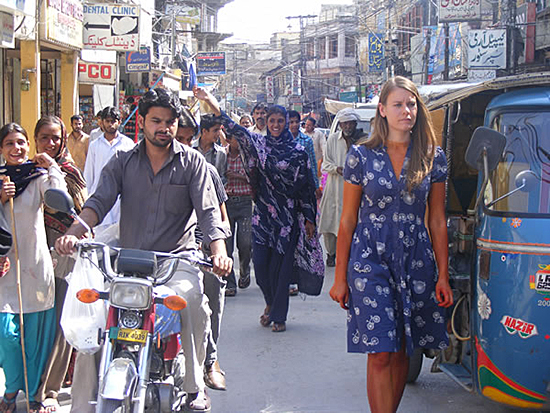
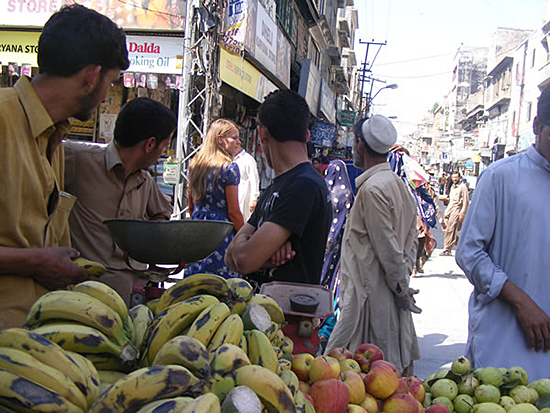
Another VASL participant Lara Baladi who came in from Lebanon and Egypt for the international artist residency, Karachi, 2010, reflected “So I set my self out on a quest for paradise. Where there is hell, there must be a heaven. Not so black after all and how obvious this became once I arrived in Karachi, the city of hope, known as the ‘promised land’ since the creation of Pakistan. Signs of paradise, although clouded by extreme pollution and threatening falcons flying over people’s heads, are everywhere in every way. My quest took me in all directions from Karachi to Lahore, from truck art to wrestlers, desires, hope, encountering all aspects of human struggle in a country as fragile as a child yet as fearless as a tiger” (Vaslart.org, 2017)
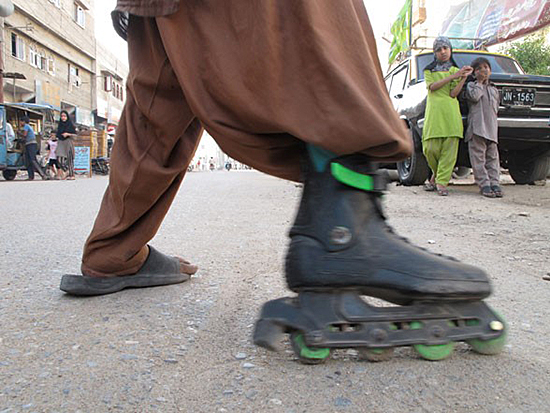
Figure 6: Lara Baladi. Source: (Vaslart.org, 2017)

Figure 7: Lara Baladi. Source: (Vaslart.org, 2017)
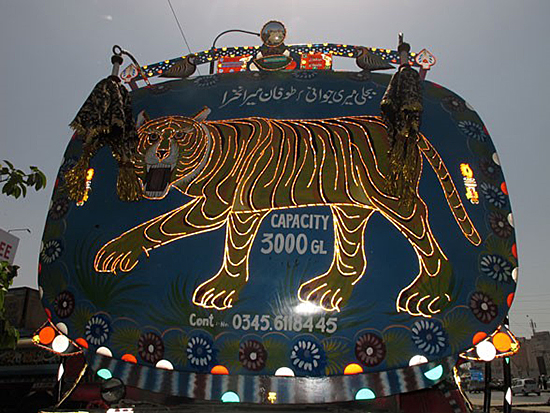
Figure 8: Lara Baladi. Source: (Vaslart.org, 2017)
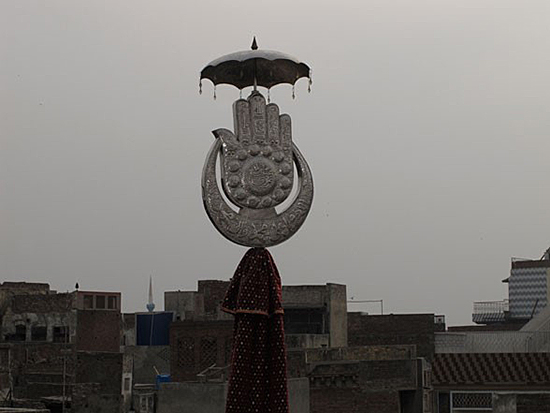
Figure 9: Lara Baladi. Source: (Vaslart.org, 2017)
Akcakaya and Baladi both inherently overlapped their origin or identity to that of the place they arrived at, their hopes and expectations, ideologies are jolted and reformed through the journey, as the city shares its secrets – but could this have been done without expectations or connections from their own experiential or cultural visions?
It is a similar scenario of exciting collaboration with Sebastian Schmidt who came in as the Vasl Resident Artist for the month of May 2016 from Wiesbaden, Germany. He has contributed to the European graffiti scene since 1999 and collaborated with the local truck artisans to paint a mural at the Karachi international airport. The Goethe-Institute Karachi and the German Consulate General supported Sebastian's work and his stay.
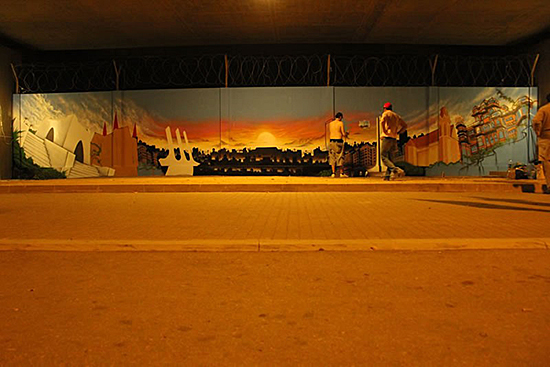
Figure 10: Sebastian Schmidt
Source: (Vaslart.org, 2017)
Eric Peter a performance focused practitioner visited Vasl from Netherlands for the ‘International Residency Spring 2010’. “In his semi-anthropological and associative excursions, socio-political subjects are being explored to question the thin line between similarity and otherness”. (Vaslart.org, 2017)
Jamie George is the 2012 recipient of the Gasworks International Fellowship: The project comprises a film, where the sound track will be replaced by music by the Caretaker. “The Caretaker is a long-running project by UK based electronic musician James Kirby. Kirby’s project was initially inspired by the haunted ballroom scene in Stanley Kubrick film The Shining (1980). The music post produces vintage 78 vinyl records, where, 'snippets of archaic sonics reflect the ability of Alzheimers patients to recall the songs of their past, and with them recollections of places, people, moods and sensations’. This pairing highlights deaths of utopian ideas, object-hood and spaces of degradation, exposed to spectres of the past”. (Vaslart.org, 2017)
We could have been born without memory, a sense of place, or we could have geographical restrictions – but wo/man-kind delves to edges and travels through, air and water. Questioning origin in the context of artist residencies has been a bigger dichotomy and challenge than I thought it was. Artistic vision varies on sociological, cultural, geographical, political or personal grounds. Upon reflection on the works and artists discussed through the essay one identifies that artists reach the new destinations with their own baggage: they make associations and have ideologies – they challenge understandings and look for newer meanings. Their palate and scope of reference increases, shared knowledge and creativity can erase border lines on our world atlas – to the extent of friendships, collaborations and returning with a different vision. Yet, one step forward is maybe two steps back. Loss of memory is a sickness in our world, an Alzheimer’s patient may not remember the way back home – yet we all want to go home, at some point at least, wherever it is – even if a new one. There would have been no residencies without origin - about art and visual, the pursuit shall continue.
Websites
Vaslart.org. (2017). Vasl International, 2015. Available at: http://www.vaslart.org/xhtml/artnow/residencies/images/2015/international_residency_2015/press_release.pdf [Accessed 11 Aug. 2017].
excerpts orientalism. (2017). [online] Available at: https://www.oneonta.edu/faculty/farberas/arth/arth200/orientalism.html [Accessed 2 Aug. 2017].
Vaslart.org. (2017). Anup Mathew Thomas. [online] Available at: http://www.vaslart.org/xhtml/artnow/residencies/2006/International%20Artists'%20Residency%20Lahore/anup_mathew_thomas/index.html [Accessed 8 Aug. 2017].
Vaslart.org. (2017). Art Jones Public Outreach Residency:. [online] Available at: http://www.vaslart.org/xhtml/artnow/residencies/2012/2012/Art%20Jones%20Public%20Outreach%20Residency/index.html [Accessed 2 Aug. 2017].
Vaslart.org. (2017). Basak Akcakaya. [online] Available at: http://www.vaslart.org/xhtml/artnow/residencies/2010/vasl_rohtas_residency/artists/images/basak%20akcakaya/index.html [Accessed 5 Aug. 2017].
Vaslart.org. (2017). BETWEEN THINKING, SEEING, SAYING AND NOTHING. [online] Available at: http://www.vaslart.org/xhtml/artnow/residencies/2015/int_res_2015/index.html [Accessed 1 Aug. 2017].
Vaslart.org. (2017). Gasworks International Fellowship: Jamie George. [online] Available at: http://www.vaslart.org/xhtml/artnow/residencies/2012/jamie%20george/index.html [Accessed 1 Aug. 2017].
Vaslart.org. (2017). Gemma Sharpe. [online] Available at: http://www.vaslart.org/xhtml/artnow/residencies/2010/international_artists_residency_karachi/gemma_sharpe/index.html [Accessed 10 Aug. 2017].
Vaslart.org. (2017). International Diasporic Artists' Residency 2008. [online] Available at: http://www.vaslart.org/xhtml/artnow/residencies/2008/International%20Diasporic%20Artists'%20Residency%202008/index.html [Accessed 2 Aug. 2017].
Vaslart.org. (2017). Gasworks International Fellowship: Jamie George. Available at: http://www.vaslart.org/xhtml/artnow/residencies/2012/jamie%20george/index.html [Accessed August 1, 2017].
Vaslart.org. (2017). Lara Baladi. [online] Available at: http://www.vaslart.org/xhtml/artnow/residencies/2010/international_artists_residency_karachi/lara_baladi/index.html [Accessed 27 Jul. 2017].
Vaslart.org. (2017). Residencies. [online] Available at: http://vaslart.org/xhtml/artnow/residencies/index.html [Accessed 23 Aug. 2017].
Gasworks.org.uk. (2017). Residencies | Gasworks. [online] Available at: https://www.gasworks.org.uk/residencies/mahbub-jokhio-2017-10-02/ [Accessed 1 Aug. 2017].
Gasworks.org.uk. (2017). Residencies | Gasworks. [online] Available at: https://www.gasworks.org.uk/residencies/huma-mulji/ [Accessed 8 Aug. 2017].
Gasworks.org.uk. (2017). Residencies | Gasworks. [online] Available at: https://www.gasworks.org.uk/residencies/zeeshan-muhammad/ [Accessed 29 Aug. 2017].
Vaslart.org. (2017). Stephanie Dachary - France. [online] Available at: http://www.vaslart.org/xhtml/artnow/residencies/2006/international%20artists'%20residency%20karachi/stephanie%20dachary/index.html [Accessed 2 Aug. 2017].
Warren Neidich. (2017). The Artist Residency in the 21st Century: Experiments in Cultural Potentiality and Contamination - Warren Neidich. [online] Available at: http://www.warrenneidich.com/the-artist-residency-in-the-21st-century-experiments-in-cultural-potentiality-and-contamination/ [Accessed 27 Jul. 2017].
Vaslart.org. (2017). URBANITIES:. [online] Available at: http://www.vaslart.org/xhtml/artnow/residencies/2016/Urbanities/index.html [Accessed 4 Aug. 2017].
Vaslart.org. (2017). Vasl & Goethe-Institut Karachi. [online] Available at: http://www.vaslart.org/xhtml/artnow/residencies/2016/sebastian/index.html [Accessed 2 Aug. 2017].











